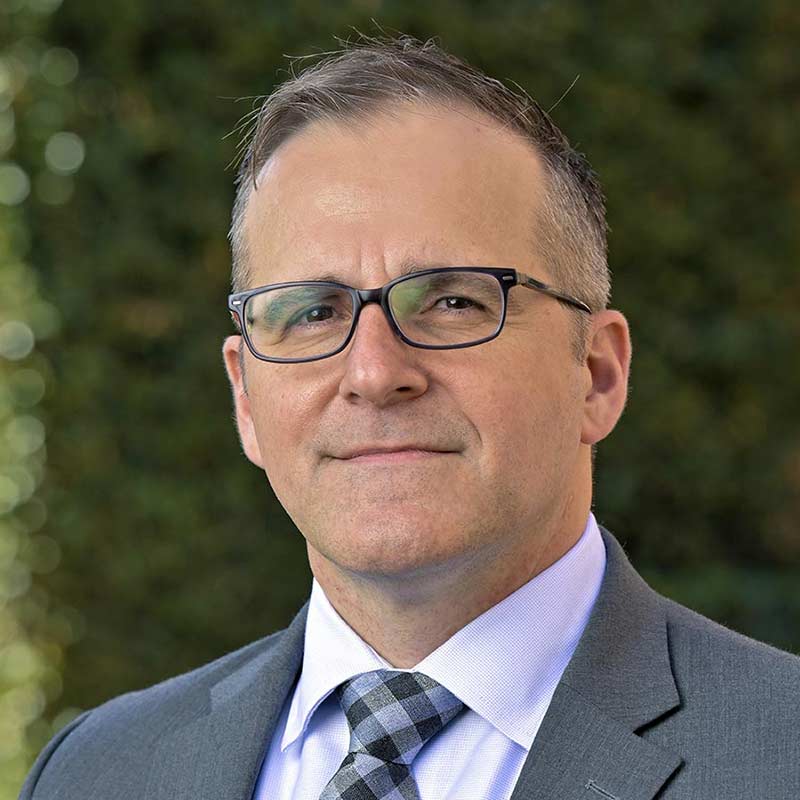As Survivors Dwindle, We Must Rethink How to Teach the Holocaust
With antisemitism, intolerance and denialism on the rise, we must remember the victims – and the dangers of nationalism and paranoid conspiracies.
The Following Op-Ed was published in U.S. News by the USC Shoah Foundation's Finci-Viterbi Executive Director, Robert J. Williams, Ph.D.
January 27, 2025
As we commemorate International Holocaust Remembrance Day today and the 80th anniversary of the liberation of the Auschwitz-Birkenau concentration camp, we find ourselves at a critical juncture in history.
There are likely fewer than 200,000 Holocaust survivors still alive, based on 2023 statistics. There has been a steep decline in the number of survivors in the past decade, and only 56 survivors of Auschwitz were able to attend today’s ceremony at the former German camp site in Poland. For decades, survivors have been at the center of efforts to build the understanding and awareness needed to ensure that we respect their experiences and those who did not survive, and build a world where such crimes are no longer possible.
Today, we need this awareness more than ever. Antisemitism is on the rise, mirroring a concerning international rise in religious intolerance and hatred. This resurgence coincides with a decline in Holocaust knowledge and a rise in denialism and distortion of history.
We need to rethink how we teach about the Holocaust. As these last survivors leave us, the rest of us must renew and expand our commitment to conveying the experience of the wide range of those who experienced this genocide.
While it’s essential to study the history of Nazi Germany, students who study only the actions of perpetrators might develop a superficial view of the real, lived experiences of victims and survivors. Students need to understand what was lost by the victims in order to appreciate the scale of the Holocaust’s destruction.
There are some who would suggest that our focus might rest better on the actions of rescuers during the Holocaust. That is also a fraught approach. On the one hand, there were people who resisted the regime and acted in the best interests of all of humanity. However, the vast majority of people stood silently by as the events of the Holocaust unfolded, often in plain sight. Israel’s Holocaust museum, Yad Vashem, recognizes some 28,000 non-Jews as Righteous Among the Nations, or people who undertook extraordinary efforts to save Jews. But Europe’s prewar population was some 560 million people, meaning such bravery was the exception, not the norm. That key fact can get lost if one only focuses on the rescuers, not the many millions who passively witnessed the fates that befell their Jewish neighbors.
Understanding the experiences of survivors and victims builds an understanding of who these individuals were before, during and, for the few, after the Holocaust. Learning their stories can also introduce awareness of how intertwined our fates can be. The Nazis and their collaborators murdered 6 million Jews during the Holocaust, and at the same time committed a separate genocide of the Roma, as well as mass atrocities and killings of ethnic Poles, Serbs, other Slavic peoples, Soviet prisoners of war, Jehovah’s Witnesses, the LGBTQ+ community, the disabled, persons of African descent and forced laborers from across Eastern Europe. (For example, on top of the 1 million Jews who were killed at Auschwitz, another 100,000 victims who perished there were not Jews.) Tens of millions more died across Europe on all sides of the war, all of this destruction because the Nazis wanted to eradicate the Jewish people.
It is important we study these experiences in order to fully understand what occurred and how it could happen again. The perpetrators of these horrors were citizens of a highly modernized, educated and democratic Germany. They lived during political upheaval, when norms and institutions came under question, and when too many sought false comfort in narcissistic nationalism and paranoid, conspiratorial thinking.
The German experience also offers a glimmer of hope, though. German antisemitism did not disappear the day the war ended in May 1945. For decades from the 1960s, 1970s and 1980s, German society began to reject and decry the hatred of Jews, while German scholars and teachers engaged in the work needed to contribute to the growing field of Holocaust remembrance.
Why? Part of the answer lies with the German people, including new generations of student leaders and politicians who eschewed the politics of the past, who committed to democracy and who understood that keeping the history of the Holocaust alive was not only the responsibility of the Jewish people.
The other component was international cooperation, particularly from the United States, which devoted vast resources to educational exchange programs and international dialogue with Germans so that they could learn democratic ideals, engage with other cultures and reflect on the Holocaust and other sins of the past.
Learning about the Holocaust can have the same effects today. But it is critical that we undertake a concerted effort to innovate Holocaust education, to expand our knowledge of this history, to cooperate and share resources and to keep alive the memories of victims and survivors for the next 80 years and beyond.
Achieving this will not be easy, but we must act now so that the last of the survivors leave us not with uncertainty about the future, but assured that there is a better world to come.
